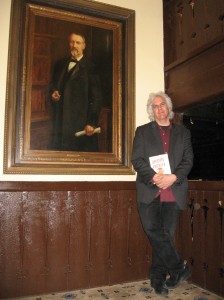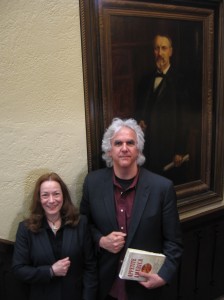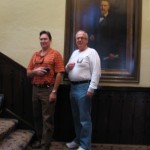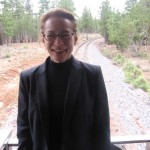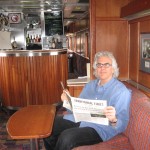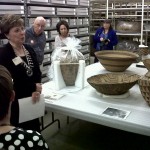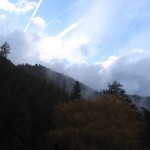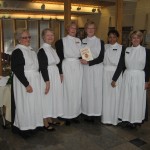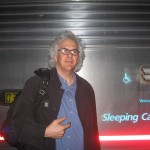Fifteen minutes before my talk in Santa Fe was to begin, as the AV guy and I were futzing with my power point presentation, we heard a strange loud hum and then all the lights went out in the windowless auditorium. At first we thought we had blown a fuse, but then the emergency lights came on and we realized power was out in the whole building. And after a few cell phone calls (luckily, they worked) we realized there was no power in the entire downtown Santa Fe area. Perfect timing, since the 180 people who had pre-paid to hear me speak at the New Mexico History Museum—and then have a Fred Harvey dinner at nearby La Fonda, where the power was also out—were already lining up to get their books and their seats in the handsome, and now dimly lit auditorium. The director of the museum, Fran Levine, who had been organizing this event with her staff for over seven months, remained as calm as possible, assuring us this happens in Santa Fe sometimes and the power usually comes back on in, say, half an hour.
It didn’t.
The capacity crowd waited patiently and good-naturedly in the dark—without elevators, we had to help some of the older folks down stairs to their seats. Just to be safe, I asked if anyone had a flashlight with them. Members of the Harvey family were sitting in the first two rows, and three Harvey girls immediately fished flashlights out of their purses—a long thin one, a flat square one and, my favorite, a robot Lego-toy one, which shot light out of its feet. After the crowd had sat for half an hour, Fran came to the stage, announced she had no idea when the power was coming back on but that, somehow, the show and the dinner would go on. Then she said she had to go back to calling the power company and gave me one of the more unique introductions I’ve had in my public speaking career.
“Stephen,” she said, throwing up her hands, “deal with it.”
So I grabbed my book and one of the flashlights and started to read, wandering back and forth on the stage, projecting as loudly as I could because, of course, there was no microphone. And once I finished the section from the prologue I like to read, and the lights still hadn’t come on, I began speaking off the top of my head in the dark. The crowd was with me, I was with them and, honestly, I don’t think I ever had so much fun lecturing. Twenty minutes in, we started hearing strange loud sounds from upstairs, as if someone was jackhammering through the ceiling to come rescue us. Fran appeared and announced they were setting up chairs for us in another room with windows—and the crowd and I all told her not to bother, we were having fun where we were and the noise was bugging us.
About thirty minutes into the talk, the lights came back on and, miraculously, the problem the AV guy and I had been having with the power point solved itself. So I just put up the first photo and kept going. It was great fun, people asked great questions afterwards, and then they all got up, left the museum, and walked en masse across the Santa Fe’s famed plaza to La Fonda, where the dinner came off without a hitch. Chef Lane Warner prepared old Fred Harvey recipes from the book, including Chicken Lucrecio, which had a delicious spicy gravy with almonds, and La Fonda pudding. During breaks in the meal, there were fascinating talks by Daggett Harvey, Jr. who spoke eloquently on behalf of the family, and Brenda Thowe, a BNSF vehicle fleet manager who has, for years, been the leading lay “Harvey-ologist” and helps former Harvey Girls and their families stay in touch (there were at two feisty former Harvey Girls among the dinner guests.)
The whole evening was, as many people noted to me, “very Santa Fe.” And Diane and I have never felt more welcomed and at home in this city we’ve been visiting for 19 years. Thanks to everyone who helped make these events a success, and May Fred be with you.
